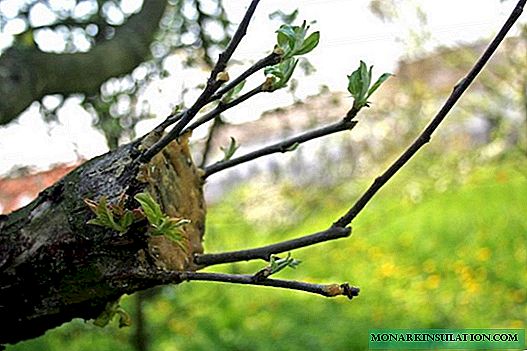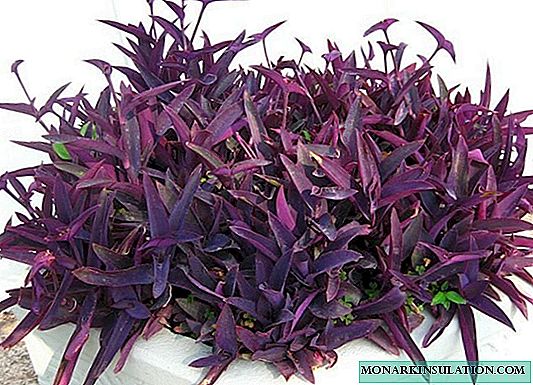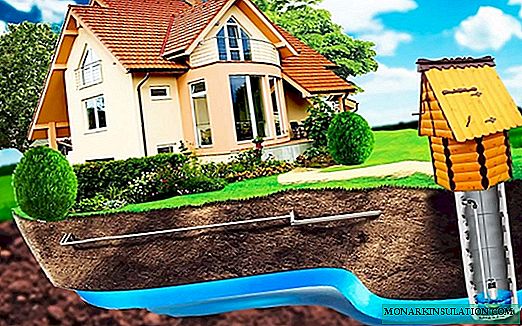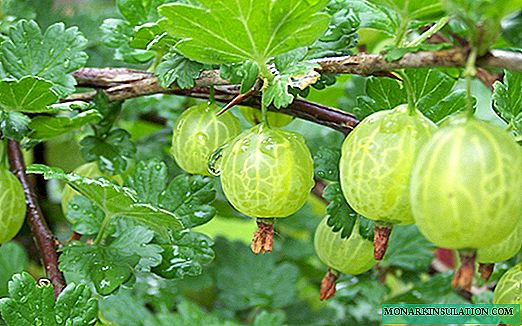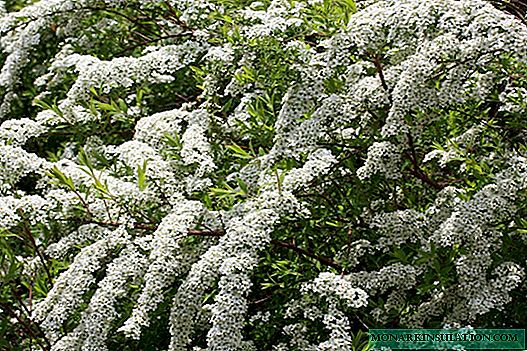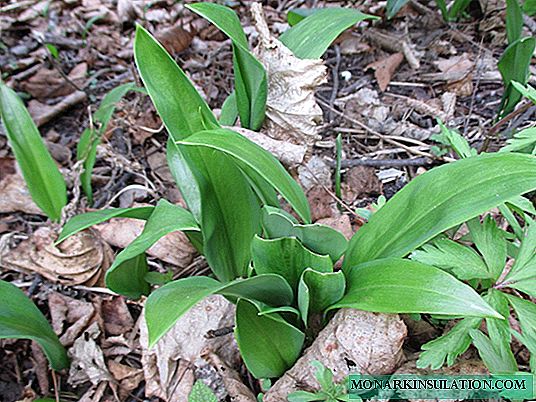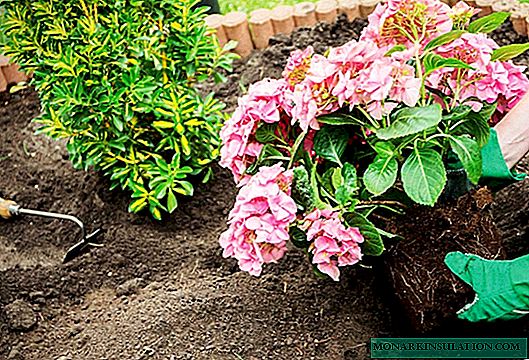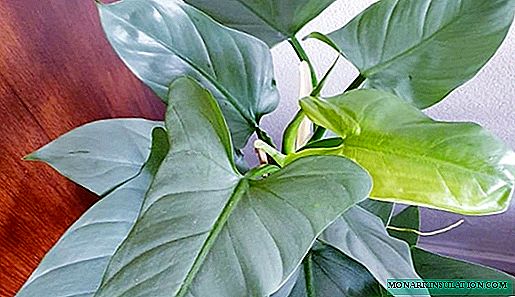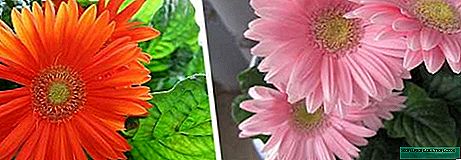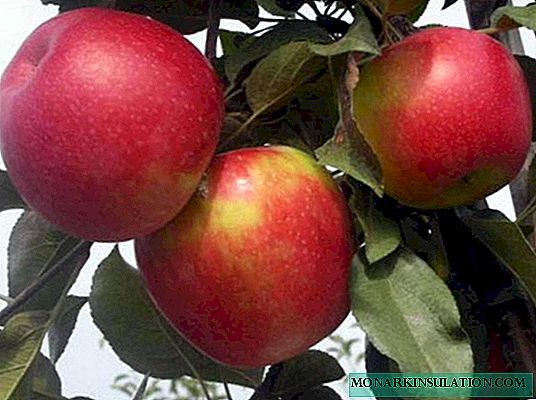
A fairly successful winter variety, obtained in America back in 1935, is widespread in Europe. It is industrial, but it is also interesting for growing in home gardens thanks to its good taste, keeping quality and transportability of fruits. It’s easy to grow Idared - we’ll tell you how to do it.
Grade description
A variety from the United States late winter ripening. At the state variety testing since 1973, in the State Register since 1986 in the North Caucasus, Lower Volga and North-Western regions. It is grown everywhere in Ukraine. The zone of industrial cultivation in Russia is the Kuban. Idared has a medium-sized - up to 3.5 m - tree with a wide-pyramidal, moderately thickened (sometimes rare) crown. The tree can grow up to six meters, if the seedling was grafted on vigorous seedstock rootstock. The trunk and skeletal branches are powerful, large, straight. Variety of mixed fruiting type, observed along the entire length of the branches without exposure. Usually, two or three apples are left for picking on the gloves. On two-three-year-old branches, dense fruit garlands are formed in the fruitful years. High-yielding variety with regular fruiting. In the Krasnodar Territory, annual productivity is observed at the level of 300-400 c / ha, which sometimes reaches 500 c / ha. One tree of six - seven years of age usually gives up to 30 kilograms of apples. After reaching the age of 10-13 years, this figure rises to 90-100 kilograms. It bears fruiting on mid-root stocks on the 5-6th year. The variety is self-infertile. In the Kuban, pollinators are varieties of apple trees Red Delicious, Wagner and Kuban spur. In southern conditions it has good winter hardiness and drought tolerance. It is immune to brown spotting, medium-affected by powdery mildew and also scab. Early flowering dates - late April to early May. Sometimes this causes the death of flowers from return frosts.

The trunk and skeletal branches of the Idared apple tree are powerful, large, straight
Fruits have an average weight of 140 grams, maximum - 170 grams. The shape is round, flattened, the surface is smooth, covered with a wax coating. The skin is thin, light green with a bright carmine or raspberry solid blush. The flesh has a creamy color, juicy and dense when picked, by the end of the shelf life it becomes fine-grained and loosens. The taste is very good, sweet and sour, the aroma is weak. Tasting taste assessment over the history of the variety fell from 4.5 to 4.0 points.
Apples hold well on branches without crumbling. Fruits are usually harvested at the end of September and stored in a cold store until a new crop. They tolerate transportation well, the output of marketable products is 88-92%. The purpose is universal, but mostly dessert.
Planting an Idared apple tree
To plant on the site of the Idared apple tree, you need to know the basic rules of this process.
How to choose a place to land
If the site for planting the apple tree is not chosen correctly, then all further efforts to grow can be useless. The gardener should know that for the productive life of the apple tree it is necessary to plant it in a well-lit, ventilated place, protected from the cold north winds, with loose, drained, unheated and unboggy soil. Only in this case can one expect (with proper care) high yields of quality fruits. The variety is unpretentious to soil fertility.
How, when to pick up and plant a seedling
The second prerequisite for the successful cultivation of apple trees is the acquisition of high-quality planting material. You can be sure that the indicated varietal characteristics are consistent only if you buy a seedling in a specialized nursery or from a seller who is trustworthy. In the fall, when nurseries carry out a massive digging of seedlings for sale, there is a wide selection of quality plants. You should know that one and two-year-old apple trees take root better. Older adults suffer a worse transplant. And also you need to pay attention to the state of the root system - it must have well-developed roots without thickenings, cones, growths. The bark of the tree should be smooth, without cracks and damage.

The root system of the seedling should be well developed
It is well known that the best time to plant any fruit plants is early spring. When planting, seedlings should be at rest - they will wake up already in a new place. Store them until they are planted dug in the ground or in the basement at a temperature of + 1-5 ° C. In both cases, the roots are pre-dipped into a liquid mash of clay and mullein to prevent drying out.
Step-by-step instructions for planting an apple tree
The planting process does not contain any operations unknown to the experienced gardener. For a beginner, we give step-by-step instructions:
- In the fall, you need to prepare a landing pit. They do it like this:
- They dig a hole of sufficient volume. Typically, its diameter should be in the range of 0.8-1.0 m, and a depth of about 0.7 m. When planting on sand and sandy loamy soils poor in humus, the volume of the landing pit is increased to 1-1.5 m3 and more.

Typically, the diameter of the landing pit should be between 0.8-1.0 m and a depth of about 0.7 m
- Prepare a nutrient mixture for the future plant and fill it with a hole to the top. To do this, mix in equal parts chernozem, peat, humus and sand. Additionally, 0.5 kg of superphosphate and 1 liter of wood ash are poured.
- They dig a hole of sufficient volume. Typically, its diameter should be in the range of 0.8-1.0 m, and a depth of about 0.7 m. When planting on sand and sandy loamy soils poor in humus, the volume of the landing pit is increased to 1-1.5 m3 and more.
- In the spring, before planting, the roots of the seedling are soaked in a solution of a growth stimulator (Heteroauxin, Epin, Kornevin, etc.) for several hours.
- In the center of the landing pit, make a hole with a volume sufficient to accommodate the root system of an apple seedling in it. At a distance of 10-15 centimeters from the center, a wooden stake 1-1.3 m high is driven in.
- An earthen mound is formed in the hole, on the top of which the root neck of the seedling is placed, and its roots are spread evenly along the slopes.
- They fill the hole with earth, ramming them in layers. In this case, it is necessary to ensure that the root neck of the plant is ultimately at the level of the soil.
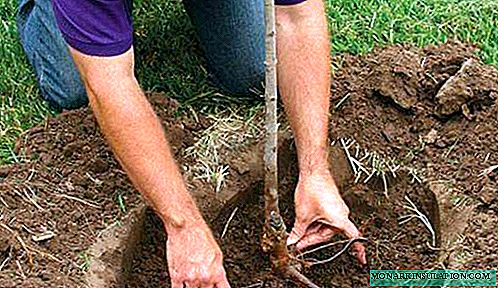
The roots are covered with earth, tamping in layers
- After that, the seedling is tied to a peg with a soft, elastic material, avoiding crushing of the bark.
- The diameter of the landing pit using a chopper or a ploskorez form a trunk circle.
- Abundantly watered the soil, ensuring its fit to the roots and elimination of air sinuses.
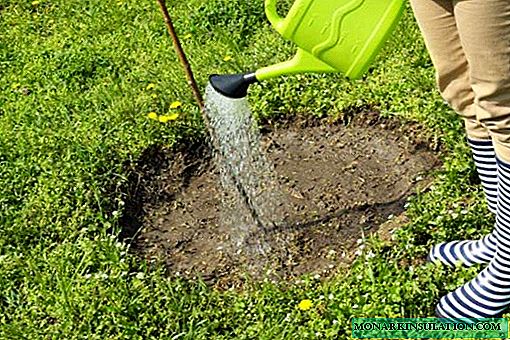
After planting a seedling, water the soil abundantly
- The central conductor of the plant is cut to a height of 0.8-1.0 m, and the branches are shortened to 20-30 centimeters.
Features of cultivation and subtleties of care
It is believed that the variety Idared is unpretentious in care, so it is easy to grow it.
How to water and feed the apple tree
Due to drought tolerance, irrigation varieties will not take much time. Four is usually enough for a season. The first time the apple tree is watered before flowering, the second after flowering, the third in August. At the end of autumn, a traditional pre-winter water-loading irrigation is carried out. This rule applies to an adult tree with a well-developed root system. In the first 5-6 years it will be necessary to water more often - up to 8-10 times per season. In the 3-4th year after planting, the tree will need additional nutrition.
Table: Idared apple fertilizer schedule
| Term | Fertilizer | Dosage, frequency | Application Method |
| Autumn | Superphosphate | 30-40 g / m2annually | Under digging |
| Spring | Urea, ammonium nitrate | ||
| Humus, compost | 5-7 kg / m2every 3-4 years | ||
| Flowering period | Boric acid | 2 grams per 10 liters of water | Spraying on flowers |
| Early summer | Potassium monophosphate | 10-20 g / m2, 3 dressings with an interval of 10 days | Leaf spraying |
| July August | Infusion of two liters of mullein in ten liters of water. Instead of mullein, you can use bird droppings or fresh grass, weeds. Add to the water when watering at the rate of one liter of concentrate per 1 m2 trunk circle. Do 3-4 feeding with an interval of 10-14 days. | ||

To fertilize the apple tree, you can use an infusion of fresh grass in warm water
Crop trimming and shaping
It is important to form the crown of the tree in the first years of its life. This operation is carried out in early spring before the onset of sap flow. The tree at this moment should still be at rest, the buds are not swollen. You should choose the form that the gardener will give the crown. If the tree is on a tall rootstock, it is recommended to give it a traditional sparse-tier form.

Tall trees are often given a sparse-tier crown shape
In the case of a dwarf rootstock, it is better to choose a cup-shaped formation that provides good illumination, ventilation of the crown, as well as the convenience of caring for the tree and picking fruit. To achieve this form, in the spring of the second year you need to select 3-4 branches on a young plant growing in different directions and cut them to a length of 30-40 centimeters. These are future skeletal branches. All other shoots are cut "into a ring." And also cut off the central conductor above the base of the upper shoot. After one or two years, 1-2 branches of the second order are formed on skeletal branches, trimming them by 20-30 centimeters. All other shoots formed on skeletal branches are cut out.

Cup-shaped crown formation is used for Idared apple trees on carly stocks
Every year in the spring, regulatory trimming is performed to thin out the crown if necessary. This is especially true with a cup-shaped formation, since it provokes enhanced growth of tops. In late autumn, after stopping the sap flow, a sanitary pruning of the crown is carried out - dry, diseased and damaged shoots are removed.
Diseases and Pests
To avoid possible diseases and pests, routine preventive and sanitary measures are taken.
Table: preventive measures in the apple orchard
| The timing | What do | How do | Why do |
| Autumn | Fallen leaves, weeds, dry branches, etc., are collected and burned. | For the destruction of wintering pests, spores of fungi | |
| Inspection, cleaning, treatment (if necessary) of tree bark | The old coarse bark is cleaned with a steel brush, the discovered cracks and damage are cleaned with a sharp knife, cutting out the damaged parts of the bark, treated with 1% solution of copper sulfate or Bordeaux liquid, a protective layer of garden varnish or garden paint is applied. | In order to prevent cortical diseases - gammosis, black cancer, bacteriosis | |
| Whitewash trunk and skeletal branches | Dissolve slaked lime in water, add 1% copper sulphate and PVA glue | To prevent diseases, sunburn, the destruction of pests wintering in the bark, | |
| Late fall | Deep digging of the soil of trunks | Raise to the surface pests wintering in the soil, which then die from the cold | |
| Processing of crown and soil with 3% solution of copper sulfate | For the prevention of fungal diseases and pests | ||
| Early spring | |||
| Pesticide crown treatment | Apply DNOC - once every three years, Nitrafen - in other years | ||
| Installation of hunting belts | Fasten belts from improvised materials on a tree trunk 30-40 centimeters from the ground | To prevent ants, caterpillars, bugs from getting onto the crown | |
| Before flowering, after flowering | Crown treatment with insecticides | Apply Decis, Fufanon, Fitoverm, Spark three times with an interval of two weeks | For the destruction of the flower beetle, butterflies, leaf flies |
| After flowering | Fungicide treatment of the crown | Apply Chorus, Quadrice, Skor, Strobi - three treatments with an interval of 2 weeks in dry weather, with an interval of 1 week in rainy weather. Fitosporin can be used throughout the season. | Fungal Disease Prevention |
Insecticides are drugs to control harmful insects.
Fungicides are called drugs to combat fungal diseases.
Pesticides combine both groups of drugs, and also include acaricides (tick control drugs).
Possible diseases of the variety
Gardeners in the reviews mention the frequent defeats of the apple tree Idared with scab and powdery mildew.
Scab
This fungal disease manifests itself in spring in conditions of high humidity and cool weather. In rainy summer, the defeat can reach 100%. Small spots of brown-olive color form on the leaves, then the scab passes to the fruits. Forms putrefactive spots on them, surface cracks. For emergency treatment, the Strobi fungicide is used, which not only quickly copes with the symptoms of the disease, but also blocks the spread of the fungus, killing its spores.

Scab on fruits forms putrefactive spots and cracks
Powdery mildew
Fungal spores die in winter with frost below -20 ° C. Therefore, powdery mildew often affects plants in the southern regions, where cold winters are rare. First of all, spores germinate on young leaves and shoots, covering them with a sticky coating of off-white color. After a while, the plaque darkens, becomes brown, with dots. In summer, it coarsens, turning into the fruiting body of a black mushroom. Affected leaves and shoots curl, deform, stop growing and dry out. Prevention and control methods are the same as for scab.

Powdery mildew spores germinate on young leaves and shoots, covering them with a dirty, white, sticky coating
Video: powdery mildew on an apple tree
Moniliosis
There are two forms of the manifestation of the disease. The first is a monilial burn. In the spring, flowers, young leaves and shoots are struck, which, as a result, wilt, turn brown. The second form of the disease affects the apple trees in the summer with fruit rot. And also its appearance during storage of apples is possible. All affected parts of the plant should be removed and destroyed; shoots are cut with a portion of healthy wood. Modern fungicides successfully cope with the problem.

In the summer, moniliosis affects the fruit with gray rot
Likely Pests
Pest insects should be fought before signs of attack appear.
Apple moth
Wormy apples are the result of the defeat of the tree by a small (1-2 cm) brown night butterfly. Her flight takes place in April - May. The duration of this period is 1-1.5 months. The butterfly lays eggs in the crown of the apple tree on the upper side of the leaf. This occurs 7-10 days after flowering. Crawling out of the eggs, the caterpillars penetrate the fruits, gnaw seeds. It will be effective to treat insecticides immediately after flowering, while the butterfly has not yet had time to lay eggs. The treatment is repeated two more times with an interval of 1-2 weeks.

Caterpillars of the apple codling moth eat fruit seeds
Apple Blossom
Small dark-colored weevil beetle. Winters in the soil of near-stem circles, and in early spring rises to the crown. The female lays one egg at a time in a flower bud, the larva that appears eats the inflorescence from the inside, and then glues it with its secretions. Effective prevention is the use of hunting belts, shaking off beetles on the litter at low (up to -5 ° C) temperatures and insecticide treatment.

The larva of the apple flower beetle gnaws the inflorescence from the inside
Aphid
These small insects are familiar to any gardener and gardener. Usually they fall on a tree with the help of ants who like to feast on the sweet aphid secretions. The hunting belt and calcareous whitewash will protect from this scourge. If the aphid still settled on the leaves and shoots of the apple tree, then insecticide treatment will help get rid of it. Twisted into a tube, the leaves must be cut off and destroyed before processing, since the solution will not get there during processing.

The aphid is located on the inside of the leaves
Grade Reviews
Re: Idared. For industrial production, the variety is disgusting ... It is struck very much by scab and powdery mildew ... It requires a huge number of treatments ... And these factors are already enough ... In the old gardens remained due to lack of good analogues ...
sleg, Ukraine
//forum.vinograd.info/showthread.php?t=9718
Re: Idared I call this variety "weedy" because it is very unpretentious in content.For beginners and for industrial cultivation it is better not to find. Unpretentious, in comparison with other varieties does not get sick, easily formed, a minimum of trimming. To taste, of course, inferior, but the one who planted will always be with apples!
Sphinx, Lugansk region, Ukraine
//forum.vinograd.info/showthread.php?t=9718
Re: Idared. Thanks to the idared, I get apples every year. Requires rationing, and several treatments from scab. Perhaps because before there was a collective farm across the road, they said that it was cut down due to illness. I didn’t notice powdery mildew, although this is a real disaster every year on gooseberries and currants. Last year, perfectly lay until May. In this I clicked with fungicides, already rot. Urgently eat up. The taste is not super, but not worse than ATB-shnyh plastic apples for sure.
ser_128, Ukraine
//forum.vinograd.info/showthread.php?t=9718
Idared apples must have been bought at least once by everyone. Currently, the variety is losing ground in European markets due to the emergence of many similar with improved properties. But, due to unpretentiousness in leaving, the high guaranteed productivity and long terms of consumption of fruits, it can be recommended for cultivation on country and personal plots.




